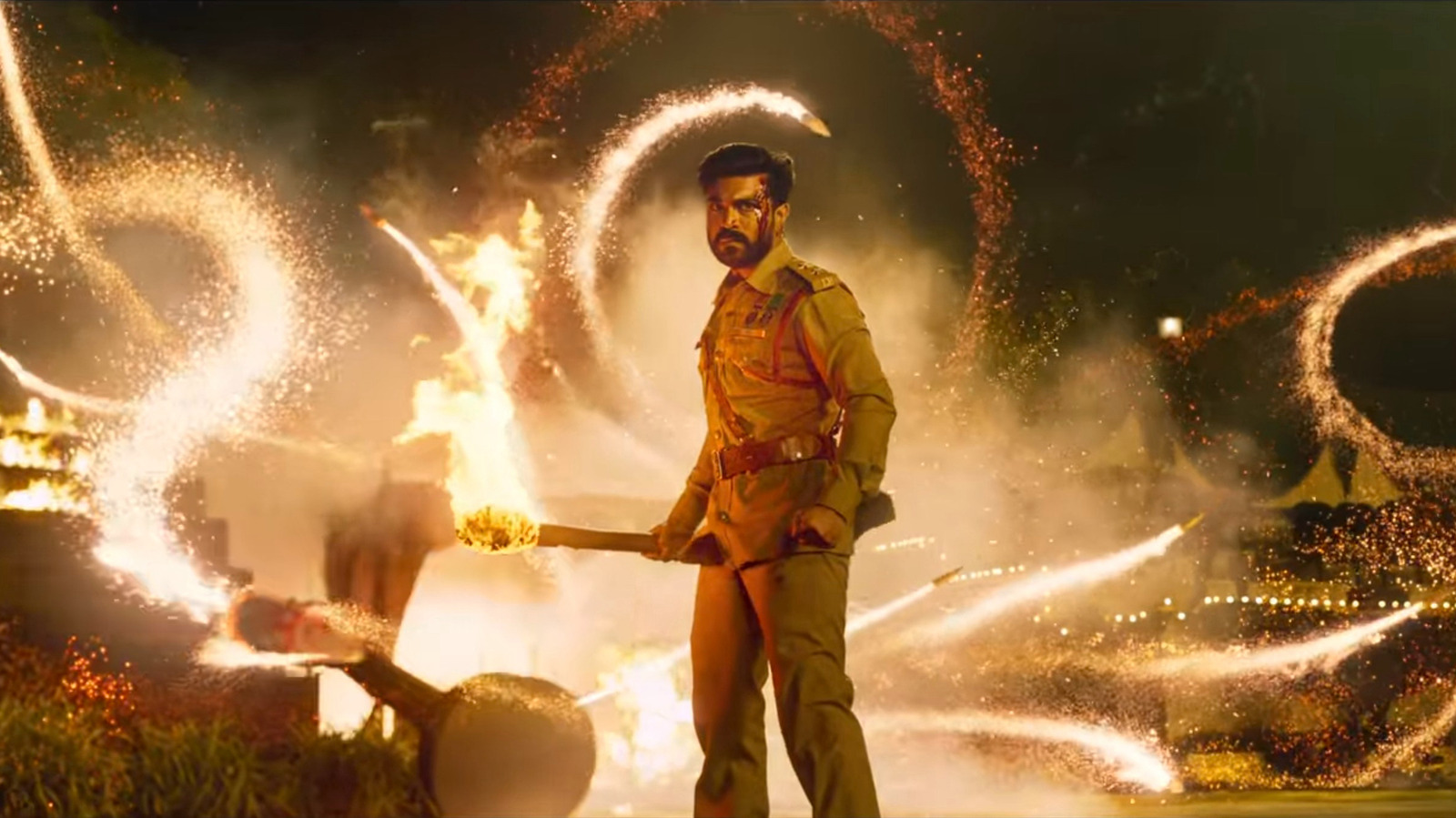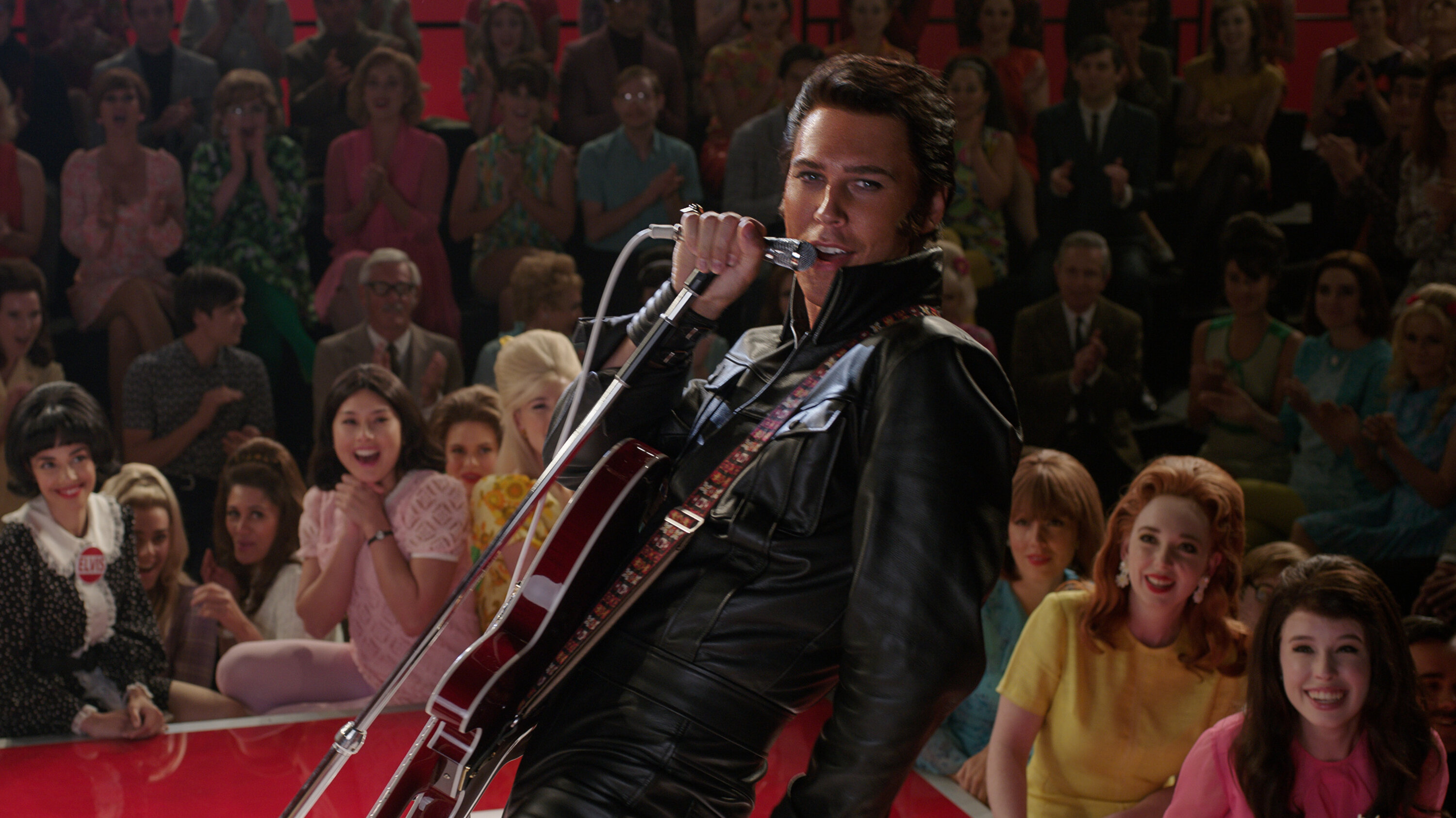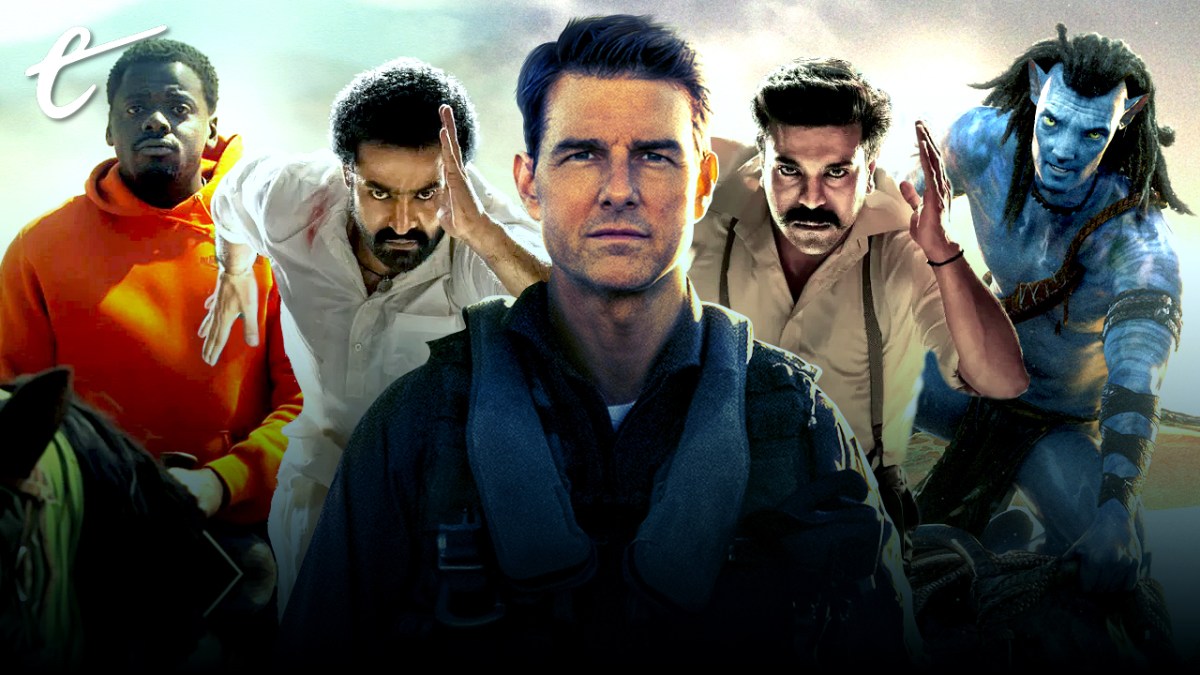It can be reductive to try to distill a whole year down to a single thematic statement, but there was an interesting recurring trend across the movies of 2022: the seduction and the horror of spectacle.
In some ways, it is surprising that Top Gun: Maverick became the highest-grossing movie of the year. After all, the idea of a Top Gun sequel had languished in development hell for years. Tom Cruise had initially been hesitant at the prospect, and there were even rumors that Paramount had considered pressing ahead with Cruise in a smaller role. In 2010, journalist Matt Patches promised to eat a shoe if the sequel ever materialized. (Patches was, at least, true to his word.)
Even allowing for all of this, the movie’s success seemed counterintuitive. Despite his reputation as Hollywood’s last movie star, Cruise had never headlined a movie that had grossed over one billion dollars at the global box office. Maverick almost doubled the box office returns on Mission: Impossible – Fallout, his previous highest-grossing film. Maverick did this through sheer staying power. It spent 19 weeks in the top 10 and 15 non-consecutive weeks in the top five.
Maverick is an old-fashioned movie in many ways, and it made its money in a very old-fashioned way. Modern movies are absurdly frontloaded, making large portions of their earnings in their opening weekends, relying on an urgency often driven by obsessive fandom and fear of spoilers. Avengers: Endgame made 41.6% of its total gross in its opening weekend. In contrast, Maverick’s opening weekend accounted for only 17.6% of its total box office returns.
This was a recurring theme across the year, with pundits racing to declare certain movies dead on arrival after modest opening weekends, only for crowds to keep turning out in the weeks that followed. Observers wrote off Bullet Train after its second weekend, but the film powered its way across the $100M mark. The opening weekend of Avatar: The Way of Water was similarly framed as a disappointment, but the film is already the second highest-grossing movie of the year.

Both Maverick and The Way of Water stand out from the crop of modern box office champs because they feel like throwbacks to an older form of blockbuster cinema; Maverick is driven by sheer movie-star charisma, and The Way of Water is powered by old-fashioned spectacle. After all, there are precious few winking references or shocking twists in Maverick or The Way of Water. These are movies that make no bones about giving the audience exactly what they want.
As Sean Fennessey noted, one of the most remarkable things about The Way of Water is how difficult it is to “spoil.” It is not a delivery mechanism for fan service, plot points, or continuity. It is something that has to be experienced firsthand, and that experience cannot be ruined by a stray tweet. James Cameron boasted that audiences could go to the bathroom whenever they wanted during The Way of Water because they’d just catch the scene they missed on their next watch.
This year saw an embrace of old-fashioned cinematic spectacle, of the kind that had largely been swallowed up by the emergence of shared universes and house styles. This was reflected even outside of American cinema, with the international embrace of S.S. Rajamouli’s Telugu epic RRR. The film became a global sensation, earning over $100M at the global box office and placing prominently on end-of-year lists at publications like USA Today, The Guardian, and Sight & Sound.
RRR marked many audiences’ first exposure to populist Indian cinema. The film is avowedly maximalist and populist. Indeed, its populist nationalism has been the source of some controversy. Like most populist Indian cinema, RRR is a movie that is everything that a movie could ever want to be. It is a musical, an action epic, a bromatic buddy movie, a sweeping period piece, a heart-breaking romance. Somehow, even with a three-hour-plus runtime, RRR feels like it is bursting at the seams.

This is not atypical of Indian cinema. In India, these films are known as “masala” movies, referencing the blend of spices in traditional cooking. This type of filmmaking is rooted in the history of Indian movie-going, where local theaters would traditionally only have one screen seating up to a thousand people, and so movies were designed to be watched by a diverse audience. The idea was that an individual film could offer the full gamut of cinematic experience: action, romance, comedy, drama.
In recent years, this model of Indian movie-going has found itself under threat, with the trend accelerated by the recent global pandemic. It is not a problem unique to India, with cinemas around the world facing similar existential crises. Taking advantage of the pandemic, studios tried to bypass cinemas by embracing streaming releases. However, this streaming experiment proved unsustainable, and it has become increasingly obvious that even streaming releases need cinemas. RRR offers movie-goers what Hollywood used to, a reminder of what has been lost in recent years.
In many ways, the success of movies like Maverick, The Way of Water, and RRR proves that audiences are hungry for the communal theatrical experience again. Nicole Kidman’s endearingly cheesy promo for AMC in September 2021 became the fodder for affectionate memes and parodies. After spending two years in lockdown and isolation, there was perhaps a palpable desire to share the theatrical experience once again, something that was hard to replicate on streaming.
After all, the long-reigning box office champs had something of a tough year. Marvel Studios failed to break a billion dollars with any of its three major releases this year: Doctor Strange in the Multiverse of Madness, Thor: Love and Thunder, and Black Panther: Wakanda Forever. While none of those movies flopped, they still underperformed relative to the brand. They were all comfortably outgrossed by Maverick and The Way of Water, two long-delayed and old-fashioned sequels.
![]()
Of course, this embrace of old-fashioned movie-going spectacle was not without its complications. There was a strange hint of melancholy underpinning many of these throwbacks, a sense that the world had shifted and that it would never quite be the same again. Maverick might be a celebration about Tom Cruise’s old-fashioned movie stardom, but it is also a movie about how that movie stardom can’t be taught to a younger generation of actors like Miles Teller and Glen Powell.
This cynicism was more obvious in other throwbacks and old-fashioned blockbusters. Jordan Peele’s Nope was a movie about the horror of all-consuming spectacle, going so far as to imply that spectacle was itself “a bad miracle.” The movie’s monster is an alien creature that feeds on crowds, one granted power by the audience’s compulsion to stare at it. “I don’t think it eats you if you don’t look at it,” explains OJ (Daniel Kaluuya). Its final form even looks like an IMAX camera.
Of course, Nope was also a virtuoso piece of powerhouse filmmaking, with critics describing it as Peele’s “Spielberg moment.” This year also saw the release of Spielberg’s The Fabelmans, a movie that felt like a personal culmination of decades spent interrogating his own role in shaping modern blockbuster cinema. Like Nope, it is possible to read The Fabelmans as a cautionary horror story about the power of the camera lens. It is just a more intimate exploration of the theme.
Baz Luhrmann’s Elvis was one of the surprising hits of the year, an old-fashioned musical biopic grossing $286M worldwide. To be fair, musical biopics have performed reasonably well in recent years, as evidenced by the success of Bohemian Rhapsody or Rocketman. However, Luhrmann brings his own maximalist sensibility to Elvis, which feels like something of a companion piece to RRR in its “more is more” approach to filmmaking and storytelling.

As one might expect from Luhrmann, Elvis is an overwhelming cinematic experience. It pulses and pounds, moving so swiftly and so breathlessly from one big set piece to the next that Patrick Willems succinctly described it as “the world’s first two and a half hour movie trailer.” Like RRR, even with an extremely generous runtime, Elvis is overflowing with narrative. There is so much going on, so loudly and so consistently, that it threatens to hammer its audience into submission through sheer force.
Like many of the year’s other meditations on spectacle, Elvis is also cynical about this scale of entertainment. Throughout the film, audiences seem to parasitically feed on the title performer (Austin Butler). They grab him, they clutch him, they drain him. They demand that he perform for them, that he satisfy them. At times, Luhrmann shoots Elvis like a vampire movie. “Why are you trying to kill my son?” demands his mother Gladys (Helen Thomson) as the crowds feed on him.
This is also at play in Damien Chazelle’s Babylon, a story about the chaos of the transition of Hollywood from the silent era into the talkies. It’s another long, loud, and propulsive movie that adopts a maximalist approach to spectacle, involving elephants and orgies. As with Maverick, this maximalist excess comes with an understanding that the party is coming to an end. Babylon isn’t just about the arrival of sound. It’s also about the more modern shifts in Hollywood and the fear that this sort of movie-making may be lost in the shuffle.
In hindsight, looking at the success of films like Maverick and The Way of Water, it is easy to celebrate 2022 with triumphant cries of “movies are back, baby!” This is certainly true. It’s been a fantastic year for populist, accessible, and spectacle-driven cinema. However, scratch the surface and there’s a more unsettling question lurking beneath many of these maximalist triumphs. “Movies are back… but for how long?”






Published: Jan 1, 2023 11:00 am